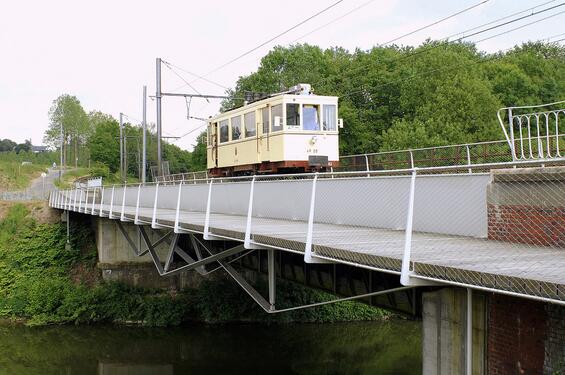- Posts
Published on 26/09/2011
"Urban and territorial management"

© Daylight, Jean-Luc Deru [...]
Using the landscape as a public space
But whatever the type of process, what is important is the evolution itself: a shift in the focus of interest of programme designers towards the landscape, seen as a space to be used. The creation of an underground car park underneath the esplanade in Ath by the architects Holoffe–Vermeersch seems to have been merely a pretext for reinventing a public space straddling the town centre and its residential periphery that is capable of summing up these two types of spatiality. To quote Sébastien Marot, the aim here is to tackle the public space as a landscape and the landscape as a public space(2). A maxim that the partnership set up between Baumans-Deffet and MSA applies to the letter in their project for the urban extension of Binche, where the aim — the building of new homes and a new commercial hub — is being hijacked for the purpose of developing the natural continuities that cross the site, adopted as structuring elements of the new project. The regeneration of Seraing, a former hub of the integrated steel industry in the Liège basin, will also take place through the definition of a major public space. The team headed by Bernard Reichen has come up with the idea of an urban boulevard through the former industrial area — a boulevard whose original ambition is continually deflating with the announced scrapping of public transport from the site (including the planned tram route) — criss-crossed by several green corridors which, we can only hope, will one day join the upper town to the lower town. As for the future of the plateau d’Erpent (partnership between ICEDD-Via, 2010) on the outskirts of Namur, this is the subject of three development scenarios each hinged on configurations of public spaces and relationships to the landscape. Today, the public space is more seen to play the role of social mediator. For the planner, in a country where land ownership is deregulated and the construction of the city essentially dependent on private initiative, the public space is the only element over which it has any control. It thus becomes a mediator of the project, an element around which an urban form is negotiated that it is no longer possible to completely contain. This is the major difference between two urban projects in Brussels currently under discussion. On the one hand, Gare de l’Ouest whose urban development plan (Groupe ACP) essentially opts for size, and Tour & Taxi (MSA), hinged around a concept of lots of public space, a 20-hectare park along the former customs halls of freight trains. On the one hand, a metro station, and moreover the largest in the capital in terms of number of lines, that is at odds with its district and, on the other hand, the promise of a place that, whatever happens, will serve users both present and future. Perhaps this is where the main development of the past ten years lies in the French-speaking Community: a shift away from construction through the repetition of volumes a priori judged apt to rebuild the city, and towards a questioning based on the uses of space, and the quality of the spatial relations. In short, a topic that can truly fuel the debate surrounding the development of infrastructures in our contemporary urban landscapes.
Géry Leloutre is an architect and urban planner. He is a permanent observer of Brussels and planning, and shares his reflections through the medium of teaching, research, articles and through concrete projects in Brussels as part of the KARBON’ research consultancy agency.
(1) Sébastien Marot, “L’alternative du Paysage”, in Le Visiteur, n°1, published by Société F
- BilletsAuteur
Audrey ContessePublished on 09/10/2018
-
Allier procédure et processus
"La scène belge est gage de qualité, d’humanisme et de poésie" peut-on lire dans le numéro 425 de l’Architecture d’Aujourd’ hui, dévolu à l [...]
- BilletsAuteur
Emmanuelle BornePublished on 06/07/2018
-
Belgitopie
Faut-il se fier aux expositions internationales, a fortiori à la Biennale d’architecture de Venise, pour appréhender les mouvements de fond et enjeux [...]



